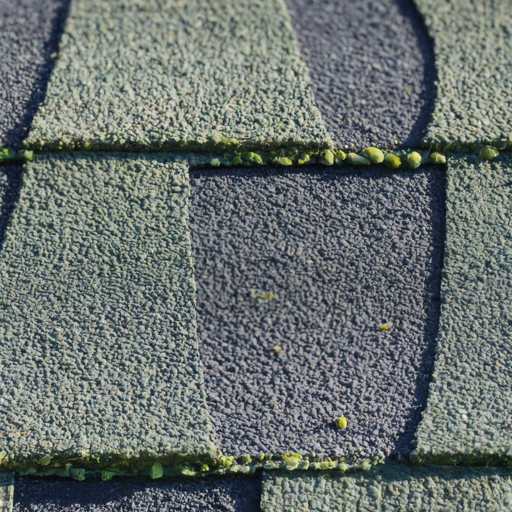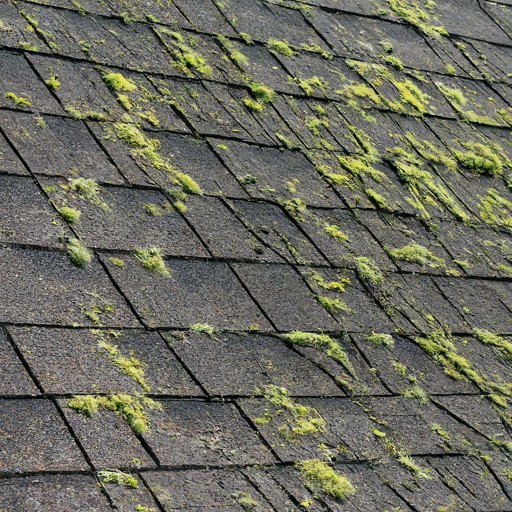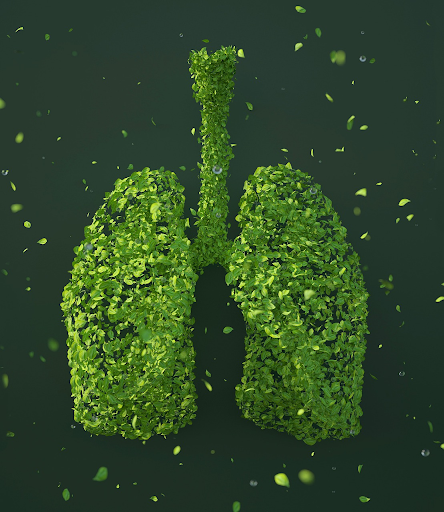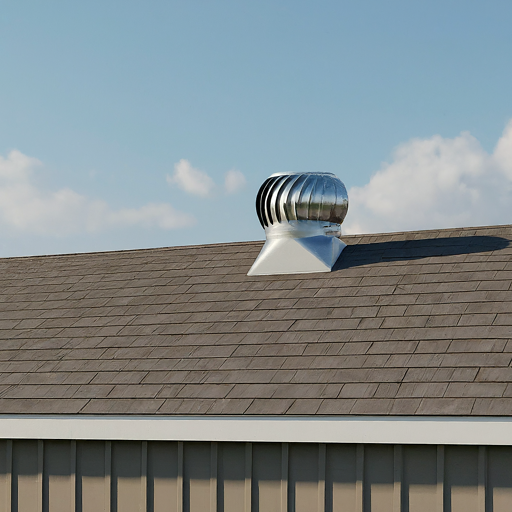The Unseen Invaders: Fungus and Mold’s Assault on Roofs
Introduction
Your roof, a valiant shield against the elements, can sometimes become a battleground for unwelcome invaders: fungus and mold. Understanding fungus and mold growth on roofs is crucial for protecting your home’s most important line of defense.
Understanding Fungus & Mold Growth on Roofs

Fungus and mold spores are ever-present in the environment. They thrive in warm, moist conditions, and unfortunately, your roof can provide the perfect breeding ground if not properly maintained.
- Moisture Source: The key ingredient for fungus and mold growth is moisture. This moisture can come from various sources, including water leaks from damaged shingles, clogged gutters, or condensation buildup.
- Organic Material: Fungus and mold feed on organic materials. Asphalt roofing and the wood components underneath your roof deck provide a suitable food source for these organisms.
- Lack of Sunlight: Mold and fungus spores prefer shady areas. Areas under eaves or north-facing roof sections receive less sunlight, creating a favorable environment for growth.
Once established, fungus and mold can spread quickly, causing problems for your roof and potentially impacting your health.
Impact of Fungus & Mold on Roofing Materials
The presence of fungus and mold on your roof can have several negative consequences.

- Deterioration of Shingles: Fungus can feed on the asphalt in shingles, causing them to become brittle and crack, accelerating roof damage.
- Reduced Lifespan: Mold and fungus growth can shorten the lifespan of your roof, leading to premature replacement and unnecessary expense.
- Increased Risk of Leaks: As fungus weakens shingles, they become more susceptible to wind damage and leaks, further compromising your roof’s integrity.
- Health Concerns: Mold spores can trigger respiratory problems and allergies in some people. Addressing mold growth promptly is crucial for maintaining a healthy indoor environment.
Causes of Fungus & Mold Growth: Threats to Your Roof’s Ecosystem
While your roof bravely shields you from the elements, it can also become a breeding ground for unwelcome organisms like fungus and mold. Understanding the causes of fungus & mold growth empowers you to create a healthy environment for your roof and prevent these roof damage agents from taking hold.
Moisture Accumulation and Poor Drainage
Moisture is the lifeblood of fungus and mold. Several factors can contribute to excessive moisture on your roof.


- Leaks: Undoubtedly, the most significant source of moisture is water leaks. Leaks from damaged shingles, flashing caps piples, valleys, or drip edges can create a damp haven for these organisms.
- Clogged Gutters: When gutters become clogged with leaves, debris, or even ice dams in colder climates, water can back up under the shingles and saturate the roof deck. This creates a perfect breeding ground for fungus and mold.
- Time aging: As your roof ages, flashing and dripping edges can become loose or deteriorate. This can allow water to seep under the shingles and contribute to moisture buildup.
Lack of Sunlight and Ventilation
Fungus and mold thrive in dark, damp environments. Several factors can limit sunlight and ventilation on your roof:
- Overhanging Trees: Dense tree cover can cast shade on your roof, preventing sunlight from reaching the surface and drying out moisture.
- Poor Ventilation: Inadequate attic ventilation system can trap moisture from inside your home, creating a damp environment under the roof deck that’s ideal for fungus and mold growth.
Impact of Weather Events
- While sunlight can help dry out a roof, sun heat combined with high humidity can create a warm, damp environment that favors fungus and mold growth.
- Severe weather events like hail lightning can damage shingles, creating entry points for moisture. Lightning strikes near chimneys or vents can also damage flashing, allowing water infiltration.
- In colder climates, cold ice and snow accumulation can melt unevenly, leading to ice dams that trap water under the shingles and create a damp environment.
Signs of Fungus & Mold Infestation: Don’t Ignore the Silent Threat
Fungus and mold, silent invaders, can wreak havoc on your roof and your health. Learning to recognize the signs of fungus & mold infestation empowers you to take action before these organisms cause significant damage. While some signs are visible, others may be subtler.

Visible Mold Growth on Roofing Materials
A visual inspection of your roof is crucial for early detection:
- Black Streaks: The most common sign is the presence of black streaks or patches on your roof shingles. This is often a form of algae growth, which can create a food source for mold.
- Discoloration: Depending on the roof types, discoloration can be a telltale sign. For example, on wood roofing, fungus growth can cause the wood to turn a grayish or brownish color. On concrete roofing, mold might manifest as greenish or white patches. Be mindful that some roof types like solar shingles, may have a naturally darker appearance.
- Moss Growth: While not directly related to mold, excessive moss growth on roofs, particularly thatch roofing or green roofing with its vegetation layer, can trap moisture and create a favorable environment for mold spores to germinate.

Allergy Symptoms in Occupants
If you or your family members experience unexplained allergy symptoms like respiratory problems, itchy eyes, or skin irritation. After spending time indoors, it could be a sign of mold exposure. Mold spores can trigger allergic reactions in some individuals.
Risks and Consequences of Fungus & Mold on Roofs
Structural Damage to Roofing Materials
Fungus and mold don’t just pose an aesthetic problem; they can wreak havoc on your roof’s structural components:
- Weakened Shingles: As mentioned earlier, fungus feeds on the asphalt in shingles, making them brittle and more prone to cracking, curling, and breaking away. This exposes the underlayment and roof deck to the elements, accelerating roof damage.
- Deteriorated Underlayment: Mold thrives in moist environments. Water trapped under damaged shingles creates the perfect environment for mold growth. Over time, mold can deteriorate the underlayment, further compromising the roof’s waterproofing abilities.
- Rotting Roof Deck: Persistent moisture and mold growth can lead to wood rot in the sheathing decking, compromising the structural integrity of the entire roof system. This can require extensive and expensive repairs.
Health Risks for Occupants

Mold spores released into the air can pose significant health risks, especially for vulnerable individuals:
- Respiratory Issues: Mold exposure can trigger allergic reactions and respiratory problems like asthma, coughing, and difficulty breathing.
- Skin Irritation: Direct contact with mold can cause skin irritation, itching, and rashes.
- Long-Term Health Effects: Exposure to certain types of mold has been linked to more serious health problems in some individuals.
Decreased Indoor Air Quality
The presence of mold can significantly impact the overall air quality inside your home:
- Musty Odors: Mold growth often produces a musty odor that can permeate your living space.
- Increased Allergens: Mold spores act as allergens, triggering allergy and asthma symptoms in susceptible individuals.
- Reduced Comfort: Poor indoor air quality can lead to headaches, fatigue, and difficulty breathing, impacting the overall comfort and health of your home’s occupants.
Prevention and Treatment of Fungus & Mold on Roofs
Proper Roof Maintenance and Cleaning
- Scheduled Inspections: Conduct regular roof inspections (at least twice a year) to identify any potential problems that could lead to moisture buildup, such as missing or damaged shingles, clogged gutters, and damage signs like moss growth.
- Cleaning: Clean your roof regularly to remove debris, leaves, and branches that can trap moisture and create a breeding ground for mold. Use a soft brush and avoid harsh chemicals that can damage your shingles.
- Gutter Maintenance: Ensure your gutters are free of debris and functioning properly to prevent water from backing up under the shingles and causing leaks. Regular cleaning is crucial for proper roof drainage.
Improving Roof Ventilation and Drainage

Proper ventilation and drainage are crucial for preventing moisture buildup:
- Adequate Ventilation: Ensure your attic has adequate ventilation to allow moisture to escape and prevent condensation buildup under the roof deck. This can involve installing soffits fascia vents and a ridge vent.
- Clear Drainage: Make sure your gutters are properly sized and slope away from your house to efficiently direct water runoff. Consider installing gutter guards to prevent leaves and debris from clogging the system.
Professional Mold Remediation Services
- Mold remediation can be complex and pose health risks. Professional remediation companies have the expertise and equipment to safely remove mold and address the underlying moisture problems.
- Professionals can assess the extent of the mold growth and determine the most effective course of action. They may recommend cleaning specific areas or, in severe cases, a partial or complete roof replacement.
- Professional remediation companies can identify and address the source of the moisture problem to prevent mold from reoccurring.
Conclusion
In conclusion, a proactive approach is the key to keeping fungus and mold at bay. By incorporating these prevention and treatment tips into your roof care routine, you can ensure your roof remains a healthy and protective shield for your home. Remember, a clean roof, proper ventilation, and addressing damage signs promptly are your best defenses against these silent invaders. For extensive infestations, professional mold remediation services can effectively address the issue and ensure the long-term health of your roof and your family.
